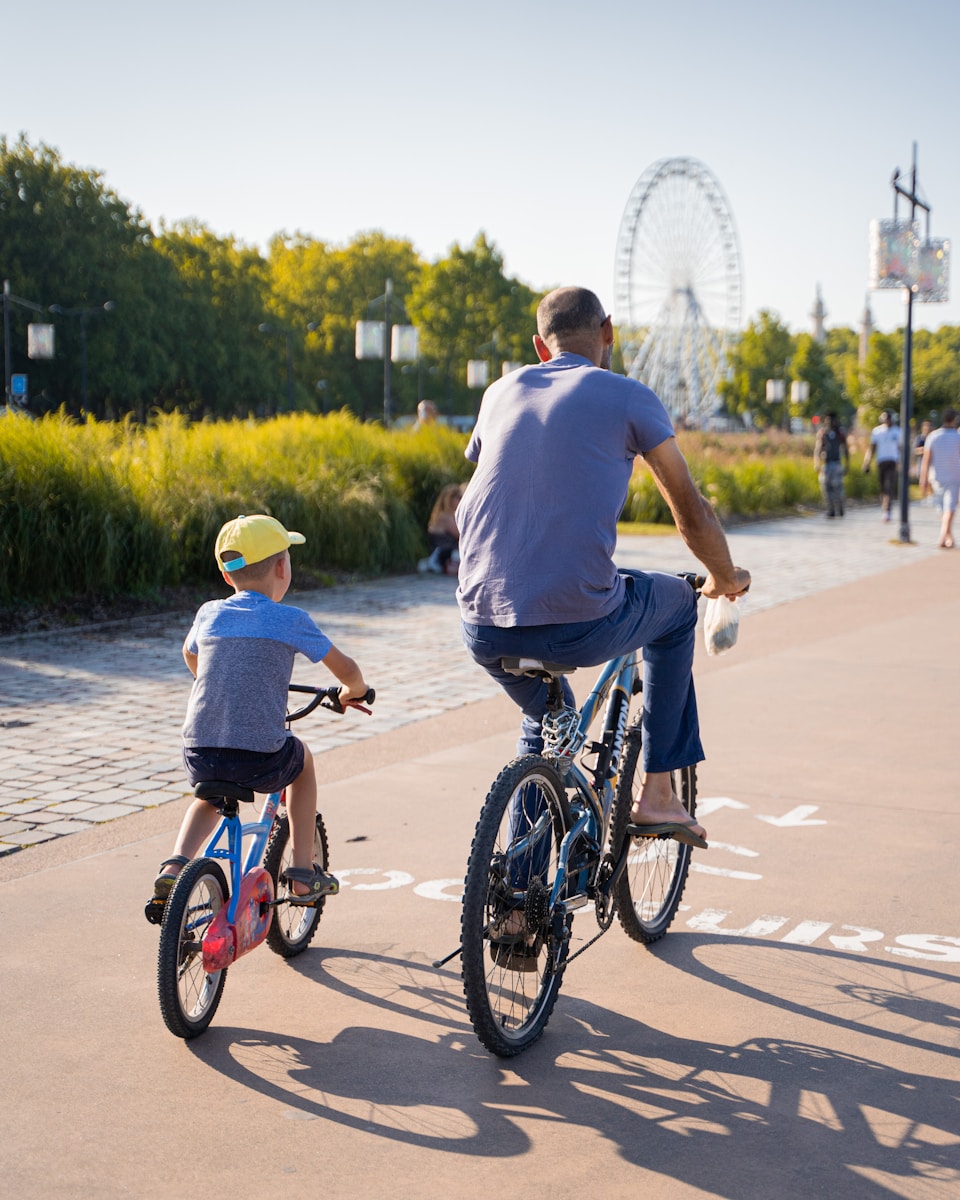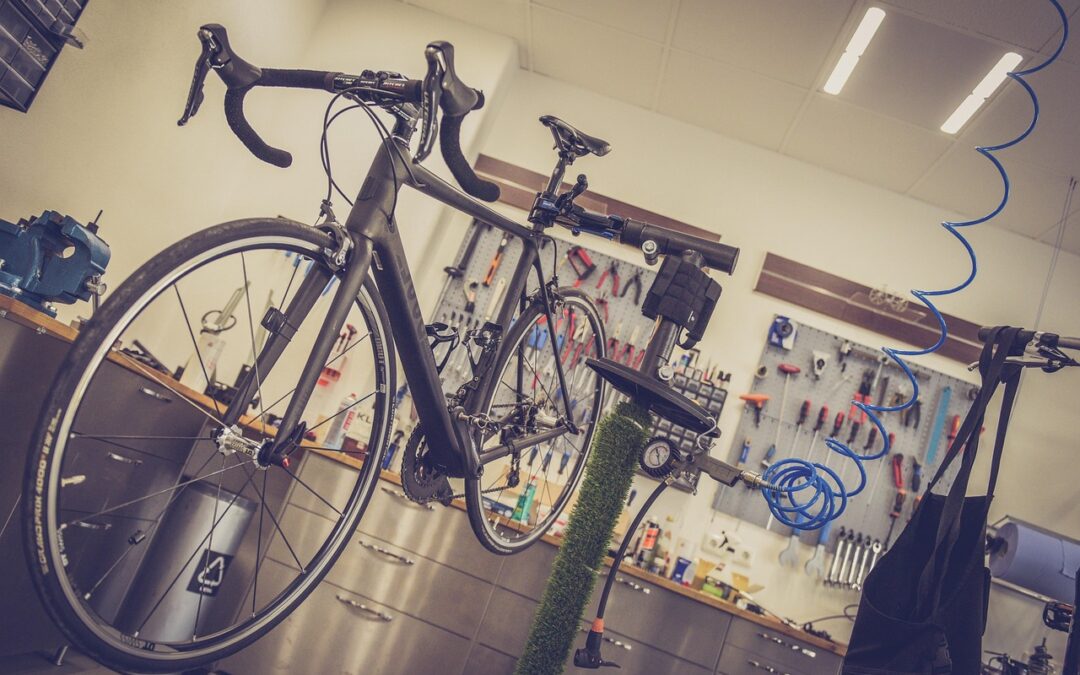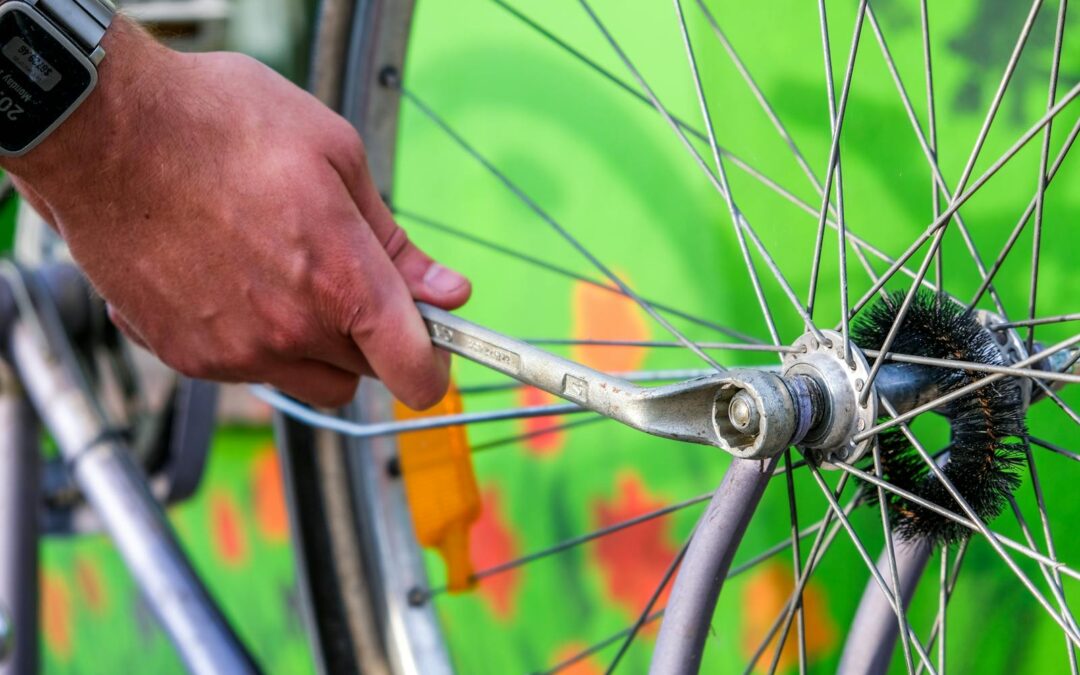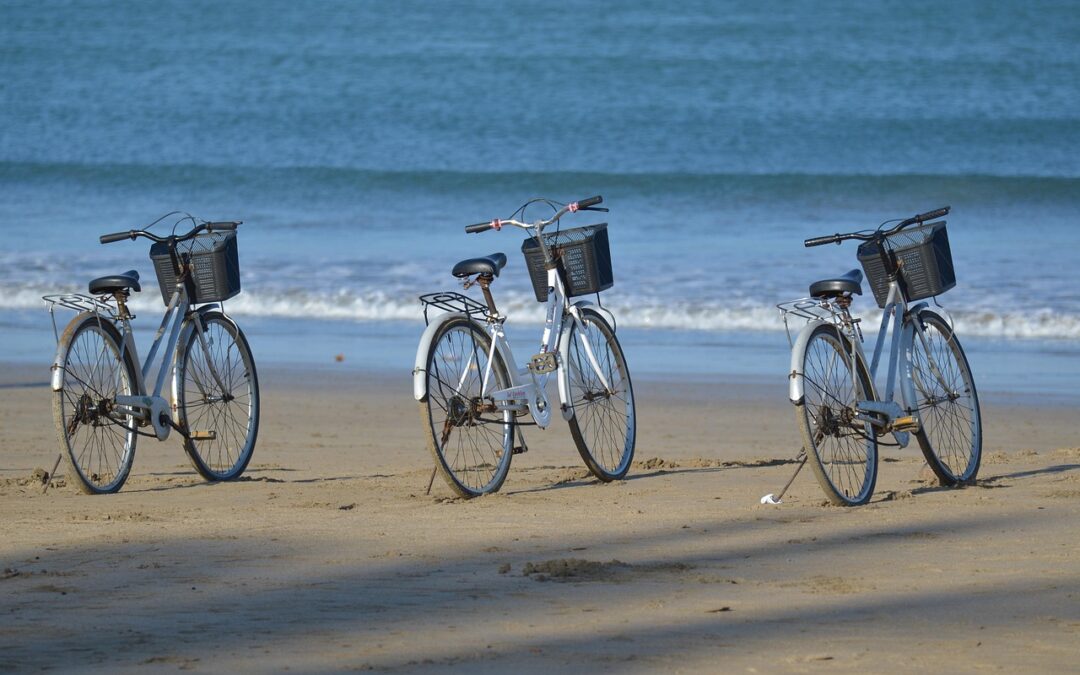Learning how to ride a bike is a treasured milestone for both kids and adults. Whether you’re teaching your child or learning as an adult, riding a bike opens the door to a lifetime of adventures, memories, and exercise. However, it can feel intimidating at first, especially without the right tools and techniques.
This comprehensive guide will take you through the essentials of learning to ride a bike, from preparing your gear to safety tips and step-by-step instructions.

Why Learning to Ride is Worth It For Everyone!
Mastering the art of cycling is more than just learning a skill. It brings numerous benefits to your physical health, mental well-being, and even your social connections. Cycling can be a fun activity with family or friends while also serving as a practical mode of transportation. Plus, the confidence you gain when you finally pedal without assistance is priceless!
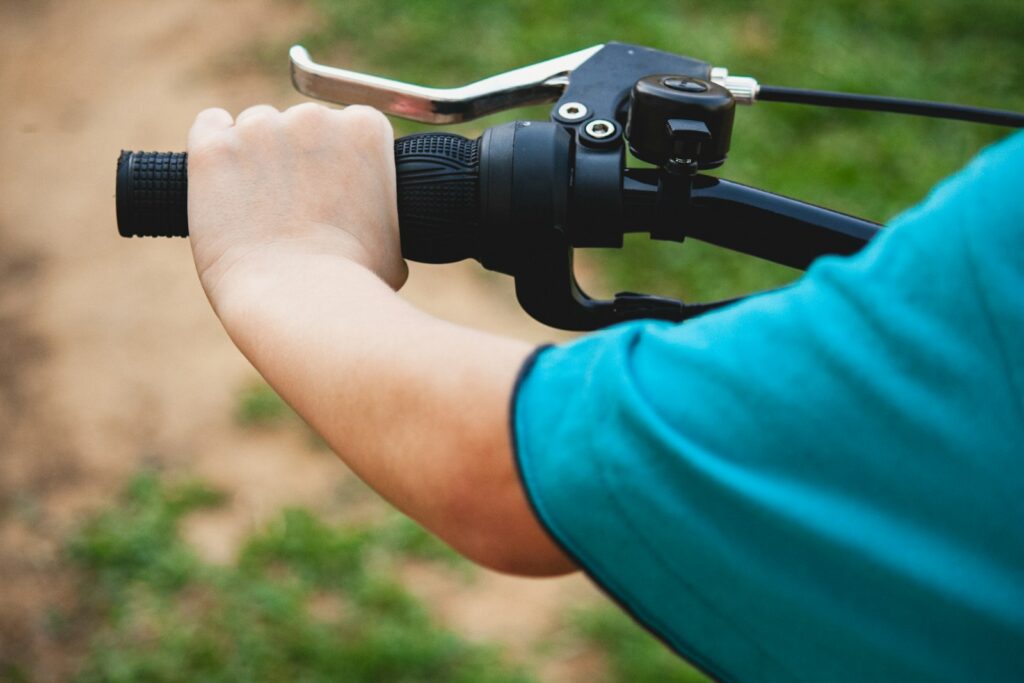
Benefits of Riding a Bike for Seniors
Cycling offers numerous physical, mental, and emotional benefits for seniors, making it an excellent activity for maintaining overall well-being at any age. Here are some of the key advantages of incorporating cycling into a senior’s lifestyle:
- Improved Cardiovascular Health: Regular cycling is a low-impact way to enhance heart health and improve circulation. It helps in maintaining healthy blood pressure levels, reducing the risk of heart disease.
- Joint-Friendly Exercise: Unlike high-impact activities such as running, cycling is gentle on the joints. This makes it an ideal exercise for seniors dealing with arthritis or other joint issues, allowing them to stay active without discomfort.
- Boosted Mental Health: Cycling can alleviate stress, reduce anxiety, and even improve mood by releasing endorphins. The combination of fresh air, movement, and a sense of accomplishment makes it a powerful tool for mental well-being.
- Enhanced Balance and Coordination: Riding a bike helps improve balance and coordination, which are crucial for preventing falls as we age. These abilities can translate into better mobility and a lower risk of injury in day-to-day life.
- Social Connection: Joining cycling groups or riding with friends and family fosters social interaction, which is vital for combating loneliness and staying connected with loved ones.
- Maintained Independence: Regular cycling can help seniors stay fit and mobile, allowing them to maintain their independence for longer. Whether it’s for leisure or short commutes, cycling can bring a sense of freedom and self-sufficiency.
By incorporating cycling into their routine, seniors can enjoy these benefits while also savoring the sheer joy of the experience. It’s a wonderful way to stay active, explore new places, and enhance quality of life.
Benefits of Riding a Bicycle for Kids
Bicycling is an enjoyable and valuable activity for kids, offering numerous physical, mental, and social benefits that contribute to their overall development.
- Promotes Physical Fitness: Cycling is a fantastic form of exercise that helps children build strong muscles, improve cardiovascular health, and maintain a healthy weight. It encourages an active lifestyle from an early age, which can set the foundation for lifelong fitness habits.
- Develops Motor Skills: When kids ride a bike, they enhance their balance, coordination, and fine motor skills. These abilities play an essential role in their overall physical development and can even help improve their performance in other sports and activities.
- Boosts Confidence and Independence: Learning to ride a bike is a milestone that gives kids a sense of accomplishment and self-confidence. Once they master cycling, they gain a tool for exploring their surroundings and experiencing a sense of independence.
- Encourages Outdoor Play: With so many indoor distractions, riding a bicycle offers an opportunity for children to spend time outdoors, which is essential for healthy growth. Fresh air, exposure to nature, and physical activity all contribute positively to their mental and emotional well-being.
- Teaches Road Awareness and Safety: Riding a bike is an excellent way for kids to learn the basics of road safety and responsibility. From understanding traffic signals to navigating paths with care, they develop skills that are important for their future as pedestrians and, eventually, drivers.
- Fosters Social Interaction: Group rides or neighborhood adventures with friends provide kids with opportunities to connect and strengthen friendships. Cycling can be a shared activity that encourages teamwork and social skills while having fun.
By engaging in regular cycling, children can thrive physically, emotionally, and socially while enjoying the pure exhilaration of riding a bike.
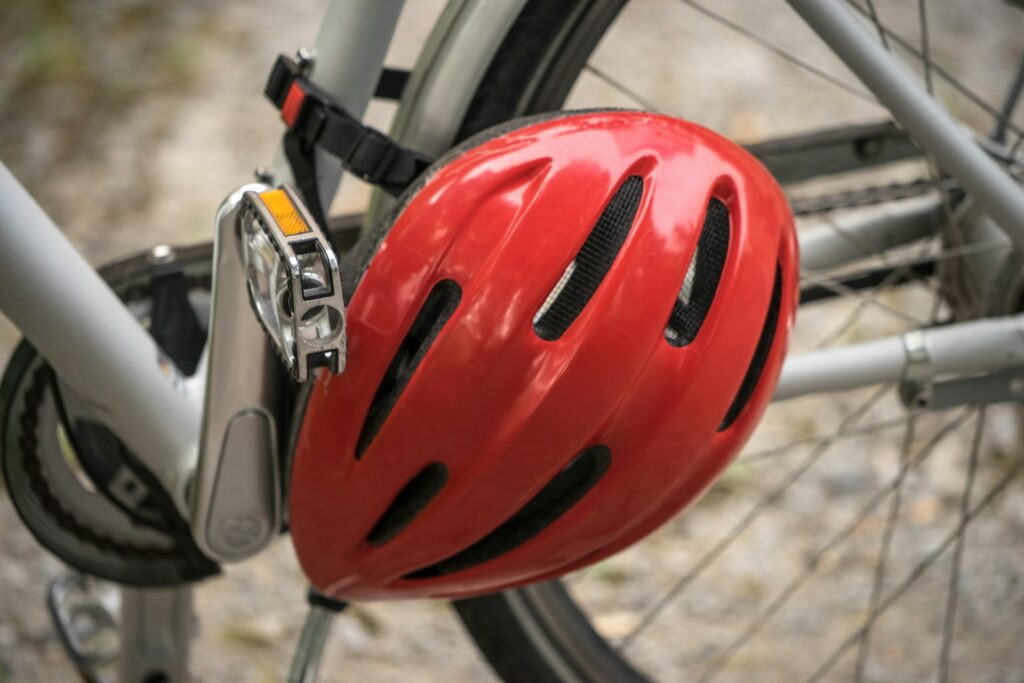
Essential Gear for Learning to Ride
Before you or your child hops on a bike, it’s important to prioritize safety and comfort by gathering the right gear.
1. Safety Helmet
A properly fitted helmet is non-negotiable. Ensure it covers the forehead snugly and fasten the strap securely under the chin. Look for helmets approved by safety standards (e.g., CPSC).
2. Knee and Elbow Pads
Falls are part of learning. Protect elbows and knees with padded guards to avoid scrapes and bruises.
3. Appropriate Clothing
Wear long pants to protect legs from accidental scrapes, and closed-toe shoes for proper pedal grip. Avoid anything loose or baggy that could get caught in the bike chain.
4. A Well-Fitted Bike
Choose a bike that matches the rider’s size. A smaller bike is usually best for kids. The child’s feet should comfortably touch the ground while sitting in the bike seat. Adults learning to ride should also look for a bike that allows for easy balancing.
Preparing Your Bike
Before you start riding, make sure your bike is properly adjusted and in good working condition.
- Check the tires to ensure they’re fully inflated.
- Adjust the seat height so you’re slightly bent at the knees when the pedals are at their lowest point.
- Test the brakes to confirm they’re functioning smoothly.
A well-prepared bike means a safer, more enjoyable learning experience.

Step-by-Step Instructions to Learn to Ride
Step 1. Find an Open and Flat Area
The best place to learn is a quiet, open space like an empty parking lot, a flat grassy field, or a paved park path. Avoid areas with traffic or obstacles.
Step 2. Get Comfortable Balancing
Remove the training wheels if applicable—balancing is the key to riding.
- Have the rider sit on the bike and walk it forward using both feet, allowing them to glide while keeping the bike upright.
- Focus on maintaining balance before introducing the pedals.
This gliding exercise builds confidence and teaches the rider to steer in a straight line.
Step 3. Learn to Start and Stop
Once the rider feels comfortable balancing, it’s time to add pedals. Have the rider place one foot on a pedal (at the 2 o’clock position) while keeping the other foot on the ground for support.
- Start Pedaling: Use the foot on the pedal to push off while lifting the other foot onto the opposite pedal.
- Practice Stopping: Teach them to squeeze the hand brakes gently and put their feet on the ground. Practicing stops ensures safe and controlled riding.
Step 4. Practice Steering
Keep the rider’s body relaxed and teach them to look ahead, not down. Encourage them to gently grip the handlebars and practice turning slowly in both directions.
Step 5. Build Confidence Through Short Rides
Start with short practice rides in a straight line. You can run alongside the bike for support, holding the back of the seat lightly. Gradually ease off as the rider gains confidence.
Step 6. Tackle Two-Wheel Independence
Encourage the new cyclist to take longer, steady rides without assistance. With practice, they’ll feel more confident balancing, pedaling, and steering all on their own.
Safety Tips for New Riders
Whether learning solo or teaching a child, here are must-know safety tips to follow while riding a bike:
- Eyes Forward: Always look straight ahead to maintain focus and balance. Avoid looking down.
- Follow Road Rules: For older kids and adults venturing out of the parking lot, practice bike-specific road safety. This includes using hand signals and staying in designated bike lanes.
- Keep the Bike Maintained: Lubricate the chain, check the brakes, and make sure the rear wheel is secure before every ride.
- Avoid Traffic: Stick to open, traffic-free areas until you feel more confident navigating streets.
Make It Fun
Riding a bike should be an enjoyable experience! Add some energy to the learning process by making it a group activity with family or friends who can cheer each other on. Celebrate small victories, whether it’s maintaining balance for a few seconds or completing a full ride around the lot. Remember, every rider progresses at their own pace.
Inspiring Kids to Ride
Many kids learn by watching others. If you have older children who already know how to cycle, encourage them to demonstrate for younger siblings. Make it a positive and exciting activity rather than a chore!

Stop by Myrtle Beach Bicycles to pick out your perfect bike. Visit us today!
Time to Start Pedaling | How To Ride A Bike
Learning how to ride a bike isn’t just about balance or pedaling—it’s about building self-confidence and enjoying the process of the bike ride whether you’re a parent teaching your child or an adult learning for the first time, the skills and joy that come with cycling last a lifetime.
Grab your helmet, gear up, and head to an open area today. Don’t forget to take it one step at a time, and soon enough, you’ll feel the freedom of pedaling confidently!

